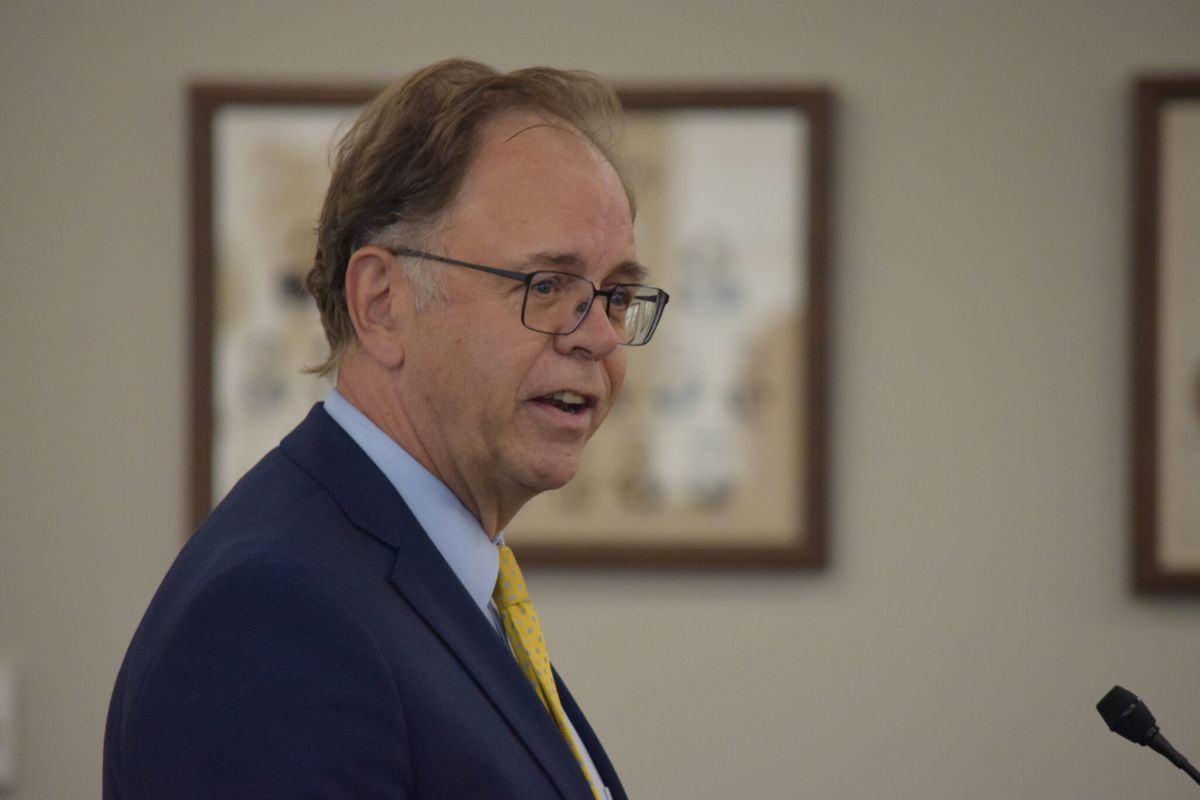By Jessica Holdman
SCDailyGazette.com
COLUMBIA — Excitement was high as state and local lawmakers gathered late Friday for the unveiling of the first Scout Motors vehicles to be made at the Volkswagen subsidiary’s $2 billion electric vehicle assembly plant north of Columbia.
The automaker gave the public its first glimpse of the vehicles — the Traveler SUV and the Terra pickup — in a ceremony held near Nashville late last month.
Friday’s event in downtown Columbia served as something of a homecoming.
State legislators took turns climbing behind the wheel of the dark blue truck and red clay-colored SUV, taking cellphone photos of one another.
Then on Saturday, the company rolled the vehicles out on the field of Williams-Brice Stadium before some 80,000 fans gathered to watch the South Carolina Gamecocks beat the Missouri Tigers.
Meanwhile, about 20 miles to the north at the assembly plant site in the Columbia suburb of Blythewood, roughly 3 million square feet of manufacturing space is at least partly up. That includes the buildings that will house the paint shop, body shop and main assembly.
The goal is to have the buildings completed in the first three months of next year and then start installing equipment.
The project is supported by $1.3 billion in taxpayer funding, which will cover the cost of road improvements, a new interstate interchange and rail spur, and site work. That included drilling 300,000 holes and filling them with stone to create underground pillars that will stabilize the soil and hold the weight of the factory.
Scout so far employs about 250 people in South Carolina, spokesman Jamie Lovegrove said. Those numbers will likely double over the next year as the company continues to push toward production at the end of 2026 or early 2027.
When at full capacity, Scout is expected to employ 4,000 people.
“And I want to be clear, as people talk about jobs,” said Scout CEO Scott Keogh.
Unlike other jobs that don’t pay livable wages, “These are real jobs,” he said.
Keogh, in his presentation, touted figures showing Scout factory floor workers will earn 40% more disposable income compared to the rest of the general working population in northeast Richland and the surrounding rural counties.
And they’ll have benefits: Health care, child care, and retirement funds.
“It’s about the transformation of the Midlands of South Carolina,” said Senate President Thomas Alexander, R-Walhalla. “We’re here to celebrate the generational aspect, how it’s going to be generational for the employees and families that will be impacted by the jobs that are created.”
Keogh also told legislators that Scout’s suppliers, some of which will be located on the assembly plant site, will likely bring an additional 5,000 jobs. “A big portion” of those will be filled by South Carolinians, he said.
And the automaker said it has taken steps to “future proof” the factory.
Beyond building all-electric vehicles with 350 miles of battery range, the plant will also make plug-in hybrids with both a battery and a gas engine that extends the range of travel to 500 miles between refueling.
This comes as the U.S. market has been slower than anticipated in warming up to electric vehicles.
The rate of new electric vehicle registration growth in the U.S. has plateaued and even pulled back month over month. Still, that doesn’t mean the vehicles aren’t on the rise, according to an analysis by S&P Global.
As of Jan. 1, 2024, electric vehicles and hybrids made up 12.5 million of the more than 286 million passenger vehicles in the United States, a number that has doubled since the start of 2020.
By July 2024, 1.6 million of the 1.8 million additional vehicles on the road in that six-month span were driven by alternative fuels, mostly hybrids, the national investment firm reported.
“People said the adoption curve is going to be direct and linear. I think something as big as a car and as complicated as a car, it’s not direct and linear. It moves in waves,” Keogh said. “I think this gives you that safety valve as you run. We’ll follow that adoption curve. But if you look at what’s happening with hybrids combined with EVs, that’s going to be the future of the market. And we’ve got one platform that can go both ways.”
“If there’s a shift, we’re not going to get stuck in this plant with this future technology,” Keogh added.
Keogh also told reporters that Scout is not reliant on the continuation of the $7,500 consumer income tax credit on electric vehicles should the incoming Trump administration not seek to extend the incentive. Without the credit, the vehicles will sell for about $60,000.
National ad
Scout’s first marketing campaign to reintroduce the brand nationally gives a shoutout to South Carolina.
The TV commercial, airing since the Nashville ceremony, features a father and daughter in the last Scout before the brand was retired by International Harvester in the 1980s.
Its scenes were also used in Friday’s unveiling in Columbia.
The ad starts with the father, a Scout worker in Indiana, driving home with the vehicle. The daughter helps him work on the vehicle and learns to drive it, then heads off to college sporting a University of South Carolina bumper sticker. It concludes with the daughter calling her father from her workplace in the new Scout development center, saying “You’re going to want to see this.”
That was the moment that Scout employes pulled the black fabric off the vehicles parked in Columbia.
Jessica Holdman writes about the economy, workforce and higher education. Before joining the S.C. Daily Gazette, she was a business reporter for The Post and Courier. S.C. Daily Gazette is part of States Newsroom, the nation’s largest state-focused nonprofit news organization.










